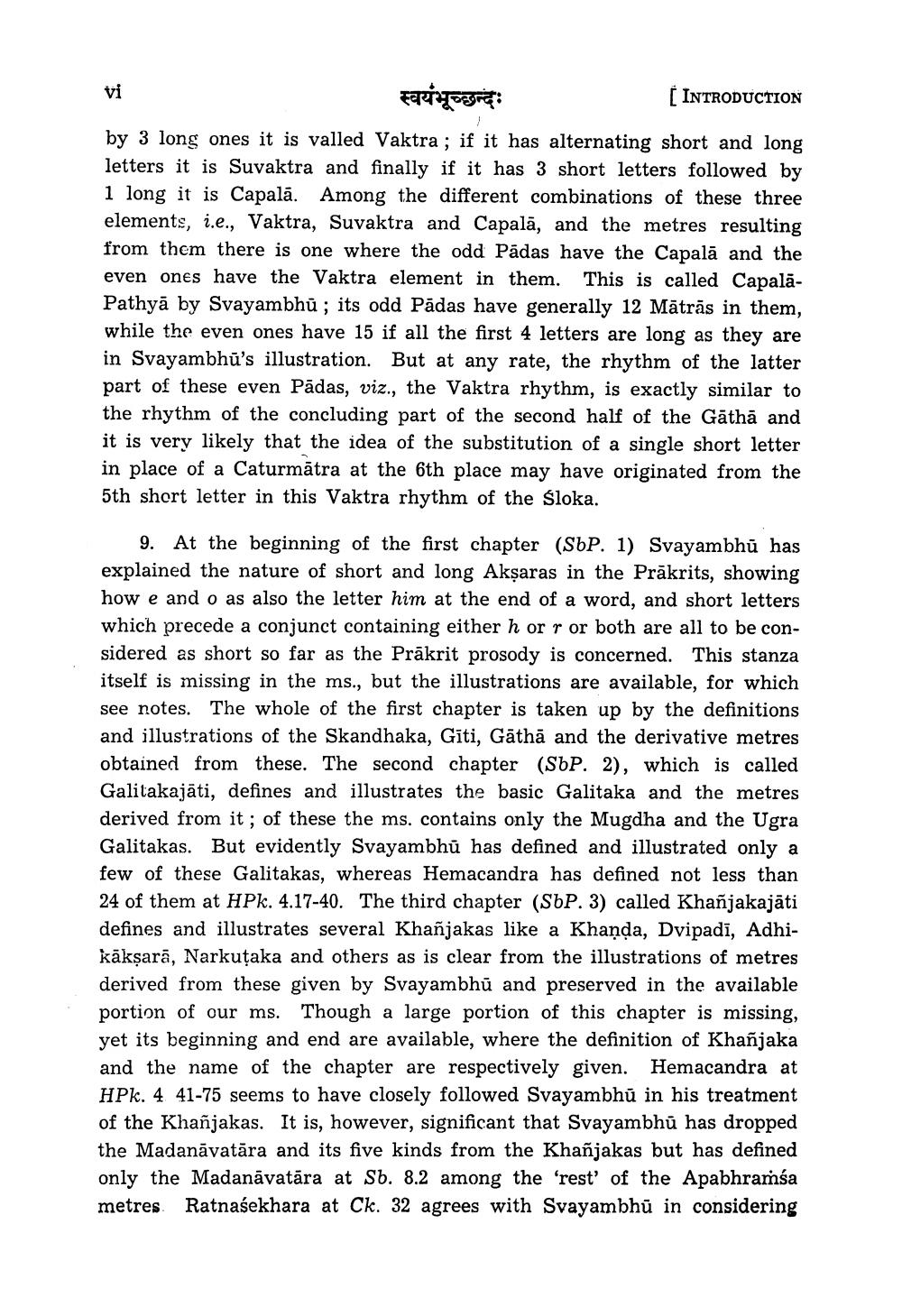________________
vi
स्वयंभूच्छन्दः
[ INTRODUCTION
by 3 long ones it is valled Vaktra; if it has alternating short and long letters it is Suvaktra and finally if it has 3 short letters followed by 1 long it is Capalā. Among the different combinations of these three elements, i.e., Vaktra, Suvaktra and Capalā, and the metres resulting from them there is one where the odd Padas have the Capalā and the even ones have the Vaktra element in them. This is called CapalaPathyā by Svayambhū ; its odd Pādas have generally 12 Mātrās in them, while the even ones have 15 if all the first 4 letters are long as they are in Svayambhū's illustration. But at any rate, the rhythm of the latter part of these even Pādas, viz., the Vaktra rhythm, is exactly similar to the rhythm of the concluding part of the second half of the Gāthā and it is very likely that the idea of the substitution of a single short letter in place of a Caturmātra at the 6th place may have originated from the 5th short letter in this Vaktra rhythm of the Sloka.
9. At the beginning of the first chapter (SbP. 1) Svayambhū has explained the nature of short and long Akşaras in the Prākrits, showing how e and o as also the letter him at the end of a word, and short letters which precede a conjunct containing either h or r or both are all to be considered as short so far as the Prākrit prosody is concerned. This stanza itself is missing in the ms., but the illustrations are available, for which see notes. The whole of the first chapter is taken up by the definitions and illustrations of the Skandhaka, Gīti, Gäth, and the derivative metres obtained from these. The second chapter (SbP. 2), which is called Galitakajāti, defines and illustrates the basic Galitaka and the metres derived from it; of these the ms. contains only the Mugdha and the Ugra Galitakas. But evidently Svayambhū has defined and illustrated only a few of these Galitakas, whereas Hemacandra has defined not less than 24 of them at HPk. 4.17-40. The third chapter (SbP. 3) called Khañjakajāti defines and illustrates several Khañjakas like a Khanda, Dvipadī, Adhikākṣarā, Narkutaka and others as is clear from the illustrations of metres derived from these given by Svayambhū and preserved in the available portion of our ms. Though a large portion of this chapter is missing, yet its beginning and end are available, where the definition of Khañjaka and the name of the chapter are respectively given. Hemacandra at HPk. 4. 41-75 seems to have closely followed Svayambhū in his treatment of the Khañjakas. It is, however, significant that Svayambhū has dropped the Madanāyatāra and its five kinds from the Khañjakas but has defined only the Madanavatāra at Sb. 8.2 among the 'rest of the Apabhramsa metres. Ratnasekhara at Ck. 32 agrees with Svayambhū in considering




